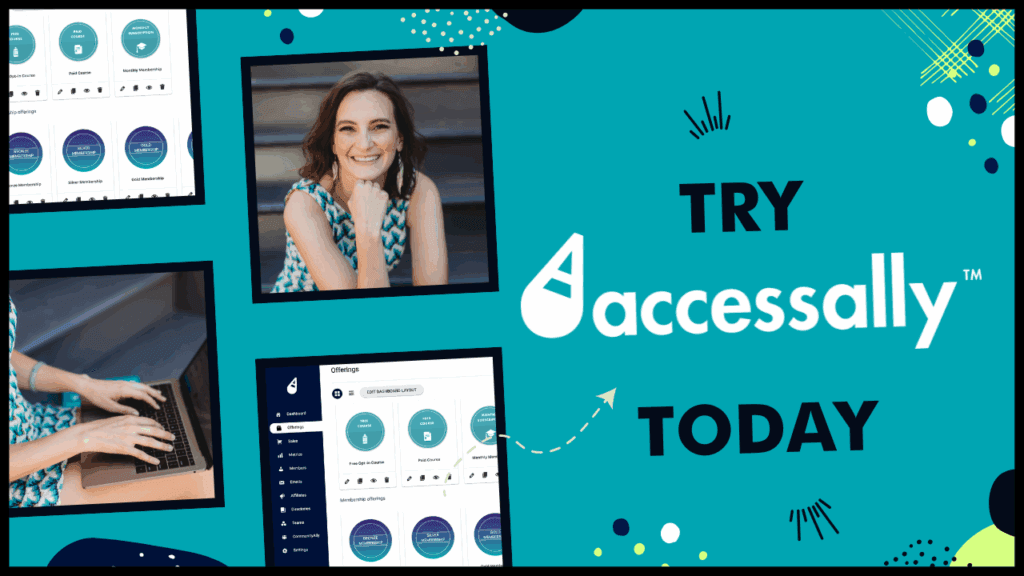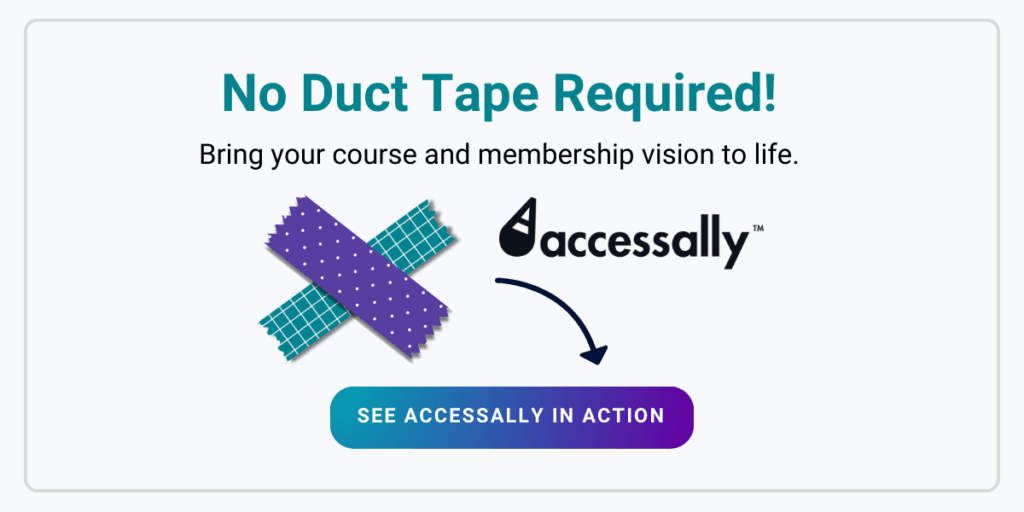The emergence of online courses has given learning a new meaning and transformed the elearning space as we know it. However, making your online course more interactive transforms it from feeling like a one-way street to something that lights up a student’s experience.
When your students are actively involved, they’re not just consuming information but connecting with it, challenging it, and making it their own. Contrary to what some may think, interactivity isn’t just a bonus to an online course; it’s the spark that ignites deeper learning and keeps students returning for more.
However, creating an interactive and engaging online course requires more than just adding a few quizzes or discussion boards. It’s about crafting an immersive environment where students feel seen, heard, and involved.
That’s why we’ll discuss the effective strategies you must know to make your courses interactive. Keep reading to give your students the experience they deserve.
Why are Interactive Courses Important for Student Engagement?
When we talk about student engagement, you first need to ensure that your online courses are interactive enough for them to be engaged. Interactive courses and an engaging environment help students love your courses instead of being afraid or procrastinating.
Here are the main reasons behind why interactive courses are essential for better student engagement:
Offers Increased Engagement
Interactive courses make learning more enjoyable and hands-on, leading to higher engagement. By incorporating interactive elements such as quizzes, simulations, and discussions, students are motivated to participate and complete tasks actively. This involvement keeps them focused and driven to progress through the course without losing interest.
Enhances Critical Thinking
Interactive courses challenge students to think deeply and analytically. Features like problem-solving tasks, scenario-based activities, and discussions encourage students to apply critical thinking. They are not merely absorbing information but actively engaging with the material to find solutions, enhancing their analytical abilities.
Rewards Interaction and Achievement
Many interactive courses include rewards, such as points, badges, or certificates, to acknowledge students’ efforts. These incentives motivate students to interact with the course content and achieve milestones. When students know they’ll be recognized for their achievements, they are more likely to stay committed and complete the course with enthusiasm.
Offers Improved Retention
Interactive elements within a course improve retention by allowing students to engage with the material in a dynamic way. Activities like role-playing, case studies, or simulations help students apply concepts in real-world contexts, making it easier to remember and recall information when needed.
Benefits Course Creators
Interactive courses benefit not only students but also course creators. By monitoring how students engage with the interactive components, instructors can adjust their teaching strategies to better suit learners’ needs. This feedback loop helps course creators tailor their content, making it more effective and personalized for the students.


5 Key Strategies to Make Your Online Course More Interactive and Engaging
When it comes to making online courses interactive, there are more strategies you’ll find online than you can count. And it’s not obviously the best option to try all of them out.
That’s why we have done the research and compiled a list of the 5 best strategies for making your online courses more interactive. Let’s take a look at the key strategies you can implement to save your online course from feeling like a dull lecture in a vast, empty room.
Incorporate Gamification
From the word “gamification,” you might wonder if it has something to do with incorporating something related to gaming into your online course. You’re not far from the truth if this was your thought process.
Gamification is simply the integration of game-like elements into an online course to encourage engagement and participation for a positive learning experience.
Consider the features you see in most video games, such as leaderboards, badges, challenges, side quests, and levels, and imagine them being integrated into your online course.
They can be seamlessly woven into your content to motivate your students to interact and engage with your course, all while doing their best to progress through the levels and earn rewards.
Moreover, the essence of gamification is to leverage games’ engaging elements to make online learning more interactive, motivating, and enjoyable.
This approach not only helps students see that learning can be as rewarding as the video games they play but also keeps them consistently engaged and motivated to complete their courses.
Use Video Courses to Enhance Learning
Video courses are one of the most effective ways to make online courses more interactive and engaging. Videos engage the auditory and visual senses simultaneously, making it easier for students to process and retain what they’ve learned.
Videos also convey emotion and context more effectively than learning texts, making it easier for your students to relate to the information you’re passing along as they pick up on non-verbal cues such as facial expressions, gestures, and vocal intonations.
Not to forget, incorporating video lessons in your course makes it more appealing to a more diversified audience, especially those who prefer watching video lessons rather than reading text materials.
Fun fact: Several studies have proven that the use of video content is an invaluable contribution to student learning, in case you were wondering.
For example, a study conducted by MIT researchers found that shorter videos (under 6 minutes) are more engaging and that students who watched video lectures with interspersed quizzes retained information better.
The researchers concluded that video is an effective medium for engaging students and enhancing learning when designed appropriately.
Simply put, video courses combined with text materials are necessary if you want a solid online course.
Implement Interactive Quizzes
Quizzes are highly effective when it comes to online learning. They’re essentially the best tool your students can maximize to ascertain whether they truly understand your course or need to learn more.
Interestingly, studies have shown that students who were tested more often through quizzes had a better understanding and retention of the course they were taught and demonstrated better performance in the final examination than students who were tested less often.
As a course creator, implementing interactive quizzes can help you determine whether additional resources are needed to simplify your course, especially if most of your students struggle to answer the quiz questions correctly.
Interactive quizzes can boost your students’ confidence, pushing them to learn further when the correct answers are provided. The instant feedback they get with the right explanation can provide insights on areas they need to improve.
Design With a Flexible Course Builder
Interactive courses are not just about the courses themselves; rather, they are the whole environment you offer through your Learning Management System (LMS). And this is where a feature-packed course builder comes in.
A flexible course builder is a feature within an LMS that allows you to design and organize your online courses with high customization and adaptability. As a result, navigating your LMS becomes easier for the students.
Some of the advantages of a flexible course builder include:
- Ease of Use and Efficiency
- Support for Multiple Content Types
- Enhanced Student Engagement
- Customization and Personalization
Increased student engagement is an automatic byproduct when you can ensure ease of use, necessary support, and personalization.
Track Student Progress
You can only ensure an interactive environment for your students if you know what they want. And there’s no option but to track students’ progress or activities to find out what they want.
Tracking your students’ progress is an excellent way to assess their performance and detect possible areas for improvement. The goal is to enhance motivation and provide adequate support where necessary to help your students complete your online course.


Introducing AccessAlly: One-Stop Solution for Building an Interactive Online Course
If you search for LMS solutions, you’ll be flooded with recommendations, and every LMS will claim to be the best. But now that we’ve been this far, eyes closed, you can figure out the perfect fit for creating interactive courses.
To save you from this trouble, we are introducing AcessAlly.
A WordPress plugin specially designed for building interactive courses and communities. This plugin can help you not only create interactive courses but also keep the students engaged with almost all the features you can ask for.
Let’s check out what AccessAlly has to offer:
Interactive Course Builder
The first thing you need to create interactive courses is an interactive course builder. And remember the earlier list of the advantages of interactive course builders?
Fortunately, AccessAlly’s flexible course builder offers that listed benefits and allows you to design your courses with any number of modules, lessons, quizzes, and more.
Even more fascinating is that the AccessAlly course builder feature focuses on functionality.
It allows you to create clean and simple designs and intuitive dashboards, optimize your courses for mobile devices, and create an organized menu for each module, ultimately giving your students the best learning experience.
Gamification Elements
AccessAlly offers all the common gamification elements, such as quizzes, leaderboards, points, badges, certificates, and more. You can implement these elements based on what resonates most with your users.
Here are some of the gamification elements AccessAlly offers:
Leaderboards: A leaderboard is a ranked list that showcases users’ achievements, progress, or points earned within a particular level or activity.
Quizzes: It’s hard to find someone who doesn’t love quizzes. In online courses, quizzes serve several purposes that make learning more effective and engaging.
Points and Badges: Points or badge systems are a great way to incentivize and reward students for their engagement and progress. Participants can earn points by logging in, completing learning objectives, finishing courses, or passing quizzes.
Students’ Progress Tracker
AccessAlly has a built-in progress tracking feature that lets you use progress bars and checklists to monitor your students’ progress through your course and obtain necessary progress information.
The LMS plugin also offers auto-generated certificates and badges, which you can issue to your students once they reach a milestone or upon course completion.
Once you purchase a plan and integrate AccessAlly into your WordPress course site, these features will be readily accessible.
Live/Dripped Courses
A drip course is an online course in which content is released to students incrementally over a set period rather than all at once. Meanwhile, a live course takes place in real-time.
If you want to release access to your course content based on a scheduled date or after your students have completed a section, AccessAlly can get this done seamlessly.
Likewise, if you want your course to be live and your students to have access to all your content at once, AccessAlly is all you need.
Private Notes
With the AccessAlly Pro private notes feature, you can create spaces for taking course notes, journaling, sharing PDF homework assignments, or with your 1:1 coaching clients to send replay links and coaching call notes.
Case Studies of Individuals Who Created Interactive Courses Using AccessAlly
Over the years, individuals who have chosen AccessAlly as the go-to plugin for designing and structuring their online courses have been impressed with the quality they achieve.
A notable case study is Rachel Fine, who embarked on a mission to provide certified nutrition education that breaks free from the constraints of ‘dancer diet culture.’
By using AccessAlly, she was able to implement various access models, ranging from subscription-based memberships to one-time payments for her live courses and digital ebooks, thereby ensuring that her program is accessible to a wide audience.
Additionally, she leveraged other features, such as ProgressAlly, to maintain private conversations with her students. Moreover, she utilized the gamification feature to allow her members to accumulate points through various activities, which they could exchange for ebooks.
Similarly, another case study is Lola L’amour, who successfully set up an intuitive dashboard for her students. She also created well-organized menus and layouts and optimized her courses for both desktop and mobile devices, all while maintaining simple and clean designs.
These case studies demonstrate that you can provide your students with a solid learning experience by adequately structuring your courses using the course builder tool and other features, such as objective checklists.
Conclusion
Enhancing the interactivity of your online courses can significantly improve learner engagement and success. We hope this blog has helped you learn the most effective ways of making online courses interactive.
By utilizing the AccessAlly LMS plugin features, you can easily implement these strategies, streamline course management, and ultimately deliver a more effective and enjoyable learning experience for your students.
We encourage you to try these strategies in your online courses and share your experiences in the comments section below. Your insights could inspire others in the community to enhance their teaching methods.
Explore our related blog posts for more tips and in-depth guides and don’t forget to subscribe to our blog to stay updated with the latest educational content and course-creation strategies.
If you found this post helpful, please share it on your social media channels to spread the word and help others make their courses more interactive and effective.





